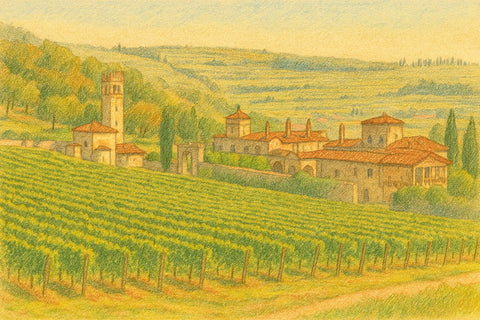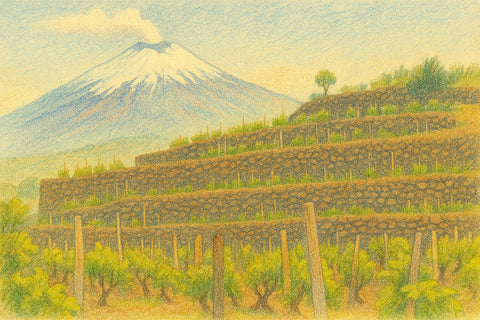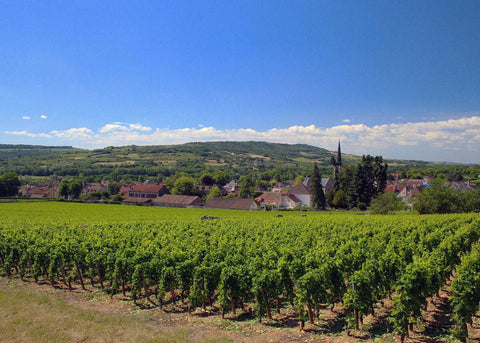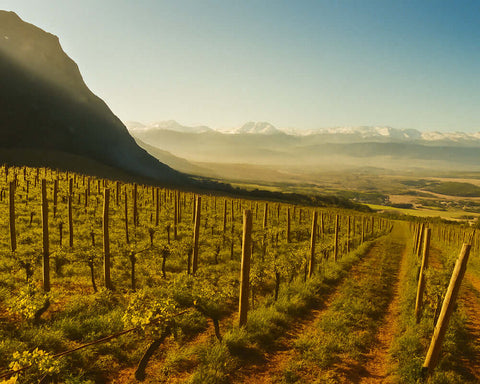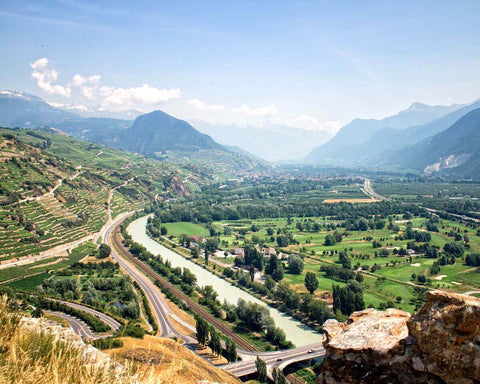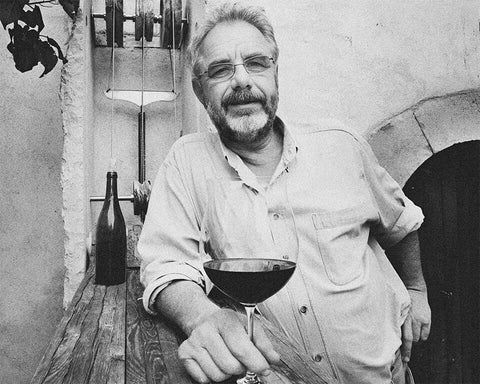Montepulciano is a versatile and widely planted red grape native to Italy. It's known for producing deeply colored, full-bodied wines with moderate acidity and soft tannins. This grape plays a significant role in Italian viticulture and winemaking, particularly in the central and southern regions of the country.
Origin and History
Montepulciano has roots in central Italy, dating back several centuries. It's important to note that Montepulciano is not related to the town of the same name as the Tuscan town, which is famous for its Vino Nobile di Montepulciano (made primarily from Sangiovese). The grape's origins are unclear, but it has been farmed in the Abruzzo region for generations.
Viticultural Characteristics
Montepulciano is a late-ripening variety that thrives in warm climates. It's known for its productivity and resistance to various viticultural challenges. The grape produces large, thick-skinned berries in loose clusters. This structure makes it less susceptible to rot and mildew than tighter-clustered varieties. Montepulciano adapts well to different training systems and soil types, contributing to its widespread cultivation.
Wine Characteristics
Wines made from Montepulciano grapes are typically deep ruby with purple hues. They often exhibit aromas and flavors of ripe red and black fruits, such as cherry, plum, and blackberry. These wines can also display notes of herbs, spices, and sometimes a pleasant, earthy character. Montepulciano wines are known for their soft tannins, making them approachable and enjoyable in their youth.
Regional Significance
Montepulciano is most famously associated with the Abruzzo region, where it's the primary grape in Montepulciano d'Abruzzo wines. It's also widely planted in the Marche, Molise, and Puglia regions. In recent years, Montepulciano has gained popularity in other parts of the world, including Australia and the United States, where winemakers are exploring its potential in new terroirs.
Winemaking Versatility
Montepulciano's versatility in winemaking is one of its key strengths. It can produce a range of wine styles, from light, fruity wines for early consumption to more structured, age-worthy versions. The grape is often used in blends, contributing color, body, and fruit flavors. It's also used to make rosé wines, known as Cerasuolo in Abruzzo, which are becoming increasingly popular.
Food Pairing
The soft tannins and moderate acidity of Montepulciano wines make them excellent companions to various foods. They pair well with pasta dishes, pizza, grilled meats, and aged cheeses. The wine's fruit-forward nature and balanced structure allow it to complement rather than overpower many dishes, making it a versatile choice for various cuisines.
Sustainability and Future Prospects
Montepulciano's natural resistance to many viticultural challenges makes it an attractive option for sustainable and organic viticulture. As climate change impacts wine regions globally, Montepulciano's adaptability to warm conditions may gain further importance. The grape's ability to produce enjoyable, accessible wines at various price points also positions it well for future market trends.

